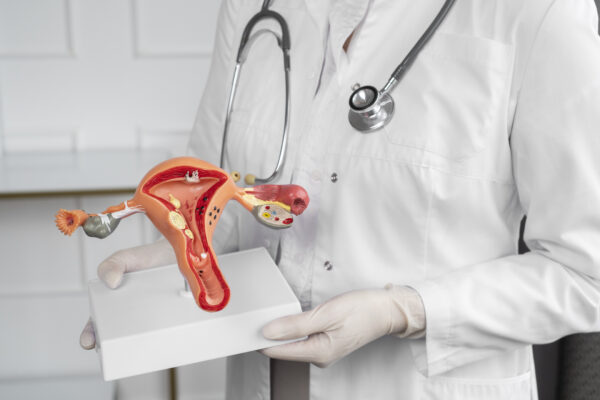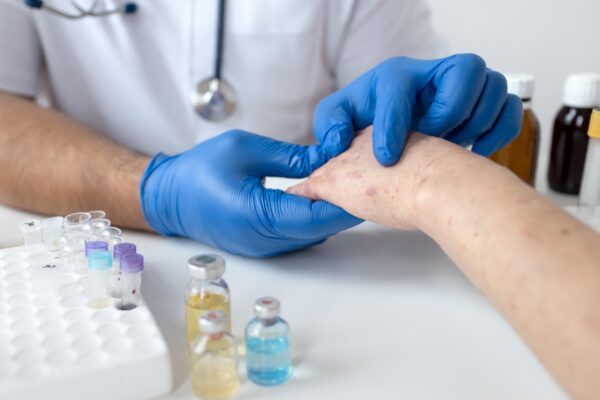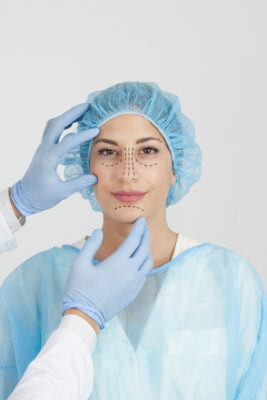
Areas of application Nitrous oxide
Where can nitrous oxide sedation be used?

Dentistry
Because of its calming effect, the use of laughing gas is ideal for anxious patients. The patients, no matter what age group, free themselves from their fears and decouple themselves from the treatment. A feeling of warmth and calm spreads throughout the body and increases the patient’s well-being many times over.
The pain sensation of the patients is alleviated by the inhalation sedation with nitrous oxide and the gagging reflex as well as the swallowing reflex are suppressed. All natural protective reflexes such as spontaneous breathing are retained, the patient is fully conscious and can communicate with the practice team at any time.
The dosage of the nitrous oxide content can be regulated individually according to the needs. The possibility of this regulation almost completely excludes side effects.
The short preparation and follow-up phase, as well as the absence of side effects, enables the patient to come to your appointment without an accompanying person and to leave the practice independently and without restrictions.
Gynaecology
In the gynecology laughing gas is very popular due to its anxiety-reducing and relaxing effect. Patients are responsive and communicative at all times during sedation, but have a reduced sensation of pain and can detach themselves from the treatment.
Especially when inserting intrauterine systems such as spirals and copper chains, the use of nitrous oxide is very well suited to make the treatment as comfortable as possible for the patient. Due to the highly relaxing effect of nitrous oxide, uncontrolled movements of the patient are avoided and the doctor’s work is made a lot easier.
The women can leave the practice as usual after their appointment, since nitrous oxide has no side effects and the effect of the sedative only lasts for the duration of the sedation.
The short preparation and follow-up phase, as well as the absence of side effects, enables the women to come to their appointment without an accompanying person and to leave the practice independently and without restrictions.


Dermatology
In dermatology, nitrous oxide sedation is a great way to reduce pain and relax the patient during, for example, laser procedures, minor surgeries or cosmetic treatments.
On the one hand, the highly relaxing effect of N₂O is advantageous for the patient because it decouples them from the treatment and, on the other hand, it makes the work of the practitioner easier by preventing the patient from making uncontrolled movements during the procedure.
In certain circumstances, local anesthesia using an injection syringe is indispensable.
PSHYCHOTHERAPY
The number of depressed people worldwide is increasing annually for both men and women. Signs of depression include reduced self-esteem and self-confidence in the affected person, as well as fear of the future and suicidal thoughts.
A variety of medications are used to treat depression, but not all have been shown to be effective and not all patients respond equally to their effects. According to studies, symptoms of severe, therapy-resistant depression can be alleviated by inhalation sedation with nitrous oxide. It has been proven that biogenic amines are released when inhaling nitrous oxide and the so-called endogenous hormones (primary catecholamines) are released. These include noradrenaline and dopamine, which, after release, causes a positive mood and elation in the patient in the medium term (up to 14 days).
The feeling of warmth and calm produced by nitrous oxide allows patients to relax and break away from their symptoms. Even a small percentage of nitrous oxide can produce symptom relief and is often as effective as heavy sedation with a higher percentage of nitrous oxide. Treatment with nitrous oxide is therefore a successful and gentle method of treating people suffering from depression and alleviating their symptoms without being restricted by side effects. Studies show that medication with psychotropic drugs is often no longer necessary for depressive patients after completion of nitrous oxide therapy.


BIRTHS
Due to the calming effect of nitrous oxide, the mother-to-be can relax during the birth relax and let go of your fears. The pain-relieving effect sets in after just a few breaths and relieves the pain of labour.
Through communication with the midwife, the woman giving birth has control over the intensity of the sedation, as well as over herself and her body. Focusing on breathing distracts women from their labor pains and fears.
Since nitrous oxide has very few side effects and is gentle, it can be combined with other painkillers. The natural course of labor and the length of labor are not negatively affected by inhaling nitrous oxide.
Current studies show that gentle sedation with nitrous oxide has no negative effects whatsoever on the mother and the unborn child. A guaranteed oxygen supply of at least 50% ensures high oxygen saturation in the blood during the course of labour.
The rapid evacuation of nitrous oxide from the body prevents accumulation in fetal tissue.
ASTHETIC SURGERY
More and more practices are turning to aesthetic facial surgery nitrous oxide sedation to reduce anxiety, pain and anxiety during treatment.
Laughing gas evokes a feeling of relaxation and lightness in patients and the perception of pain decreases significantly.
Nitrous oxide sedation is often used in aesthetic surgery for wrinkle treatments with botulinum toxin, wrinkle treatments with hyaluronic acid and laser treatments.

— Images By Freepik
